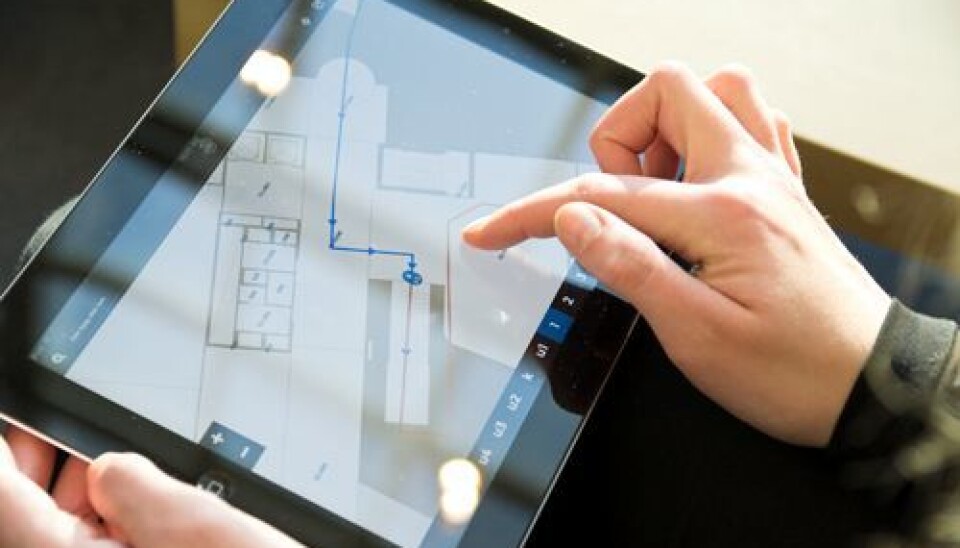This article was produced and financed by The Research Council of Norway

GPS for indoor use
Have you ever lost your way in a large office building or on a university campus? A new smartphone app shows you the internal layout of a building and helps you to find your way.
Denne artikkelen er over ti år gammel og kan inneholde utdatert informasjon.
The company Wireless has developed an on-the-go service displaying maps of building floor plans. The Norwegian University of Science and Technology (NTNU) has been a customer and collaborative partner in the project behind the app dubbed the CampusGuide.
Navigating the labyrinth
Sixty buildings comprising 13 000 rooms occupy 350 000 square metres of space on the NTNU main campus Gløshaugen. An effective electronic guide is very handy for employees, students and visitors trying to find their way.
The GPS signals used for outdoor navigation are not adequate for indoor use. Wireless Trondheim has opted instead to develop a solution based on existing wireless networks. The application can be run on smartphones, tablets and PCs.
The technical solution, already in use at NTNU, can be further developed and adapted for any type of large building or building cluster.
Where are you and where are you headed?
The CampusGuide pinpoints positions inside a building, displaying a map with the room the user is in and the floor the room is on. The app makes it easy to find any type of room or facility that has been indexed – for example, the nearest WC or available meeting room. It is also easy for users to share their positions with others logged into the service – a feature that can be very valuable when coordinating meetings.
“The current solution is only the beginning,” says Thomas Jelle, Managing Director of Wireless Trondheim.
“We are now working on expanding the technology’s area of application to increase the efficiency of operating and using large buildings.”
User-friendliness a high priority
“A service such as this has to look good and be user-friendly,” says Mr Jelle. “We have put considerable effort into making the app as practical and intuitive as possible. For example, it has very few menus, which prevents the user from getting lost in the interface.”
Together with Aurora Klæboe Berg, a student involved in the CampusGuide project, and Professor John Krogstie of the Department of Computer and Information Science at NTNU, Thomas Jelle has worked closely with end-users of the service during each phase of development, from initial planning to testing the service in practice.
A high-quality project receiving public funding
Since 2007, Wireless Trondheim has made use of the SkatteFUNN Tax Incentive Scheme, which is administered by the Research Council of Norway. The scheme provides financial support in the form of a tax deduction to companies carrying out research and development projects with the aim of developing new products, services or production methods.
“The tax deduction we received under the SkatteFUNN scheme has been vital to the financing of our project,” Mr Jelle states.
The project has also drawn substantial attention from the Research Council's large-scale programme Core Competence and Value Creation in ICT (VERDIKT), the public innovation agency Innovation Norway, and the Norwegian Design Council, which have all awarded funding to the project.
Translated by: Glenn Wells/Carol B. Eckman































